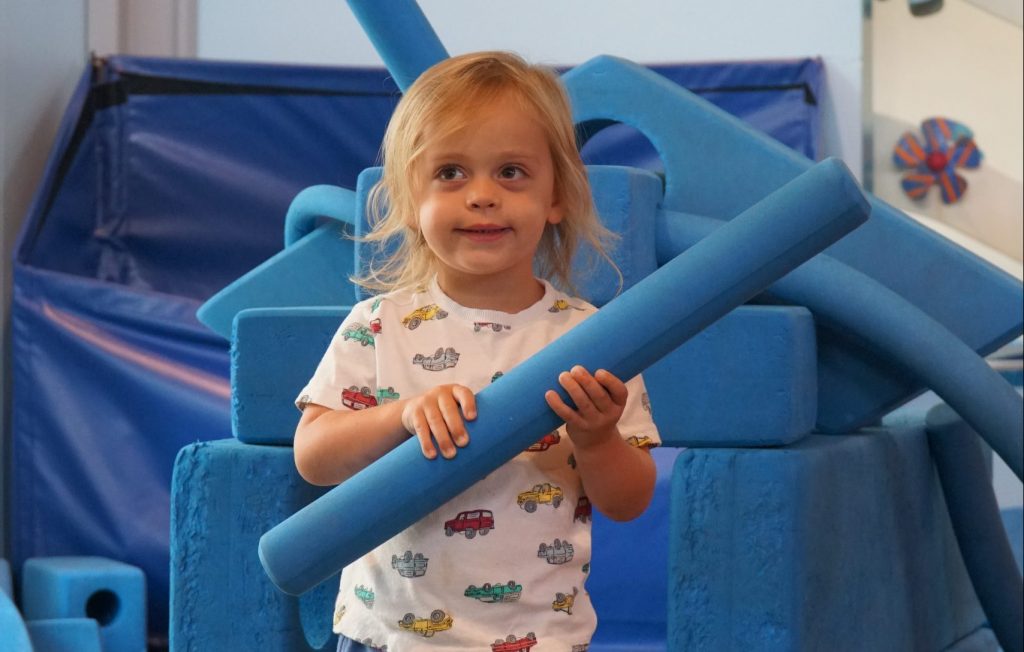November Blog 2025: Math is Everywhere: Seeing the World Through a Math Lens
When we see a toddler stacking blocks, sorting snacks, or running their fingers through grass or dirt, they are engaging in mathematical learning! Young children are naturally curious, and before they can use their words, they use their senses to learn about the world around them.
When we see a toddler stacking blocks, sorting snacks, or running their fingers through grass or dirt, they are engaging in mathematical learning! Young children are naturally curious, and before they can use their words, they use their senses to learn about the world around them.
Math learning begins long before preschool and doesn’t require worksheets or flashcards. These forms of direct instruction do not work for young children because they do not encourage positive, playful interactions. In play, children engage in physical and mathematical thinking, laying the foundation for problem-solving and reasoning skills in the future.
Young children learn by noticing, comparing, sorting, and predicting! All of these processes engage the child in what the Erikson Institute calls precursor math concepts, which lay the groundwork for the math concepts children will tackle in the preschool years.
The precursor math concepts – attributes, comparison, change, and patterns – can be found throughout our daily routines and play, which naturally foster early math thinking. Let’s explore how we can see these concepts in everyday tasks!

Attributes are the characteristics that are a part of someone or something. We use attributes to describe what we see, smell, hear, feel, and taste! Noticing the color, type, shape, or texture of an item is the first step toward classification and sorting.
Once an attribute has been established, you can begin to sort items into specific categories. Encourage your child to sort toys and food items (i.e. round tortilla, square napkin or soft teddy bear, hard block). These observations help children understand how to make groups and organize the world around them.
Comparison is noticing when attributes are the same or different, allowing for matching, sorting, and problem-solving. Comparisons can be qualitative (comparing colors, textures) or quantitative (comparing amounts or sizes). While cooking at home, invite your child to compare by prompting questions:
- “Which bowl is bigger?”
- “Who has more crackers?”
- “Which cup is full? Which cup is empty?”
These questions, though they may seem small, help build language skills and support early number sense.
Change helps children understand how things grow and transform over time. This concept is crucial to learning about measurement, sequencing, and cause and effect. There are many ways you can introduce change to your child.
- Observe how plants grow or wilt.
- Point out the transition of seasons.
- Talk about routines, like “after nap,” “before dinner,” and “in five minutes”.
These moments are opportunities to learn about process, transformation, and sequence, which are the building blocks for mathematical thinking.
Patterns are recurring structures that allow children to make predictions on what comes next. Every pattern follows a sequence and a rule. Recognizing and creating patterns lays the foundation for algebraic thinking later.
Introduce children to patterns and sequencing by singing songs that repeat like Baby Shark, Five Little Monkeys, and Head, Shoulders, Knees, and Toes. You can also build on pattern recognition by incorporating movement like clapping or dancing to the rhythm.
Mathematical talk describes what you see using math-related language. Allow your child’s curiosity to lead the exploration through open-ended questions!
- “How do you know?”
- “What happens if we add one more?”
- “Can we make it shorter/longer/wider?”
Use phrases like more/less, full/empty, before/after in your everyday speech. These words help boost your child’s curiosity and connect their vocabulary to mathematical ideas.
At the Museum, we work to recognize and support these precursor math concepts through play-based exhibits and hands-on activities that invite exploration, problem-solving, and creativity! You can do the same at home by using everyday tasks (cooking, playing, walking, talking) as math learning opportunities!
How many math moments can you spot today?
– Jasmine Pichardo, Education Specialist II
Sources
Hynes-Berry, M., Chen, J.-Q., & Abel, B. (2021). Precursor math concepts: The wonder of mathematical worlds with infants and toddlers. Teachers College Press.
Trautner, T. (2019, January 2). Sorting and classifying with infants and toddlers. MSU Extension: Child & Family Development. https://www.canr.msu.edu/news/sorting-and-classifying-with-infants-and-toddlers
Trautner, T. (2019b, January 2). Teaching patterns to infants and toddlers. MSU Extension: Child & Family Development. https://www.canr.msu.edu/news/teaching-patterns-to-infants-and-toddlers